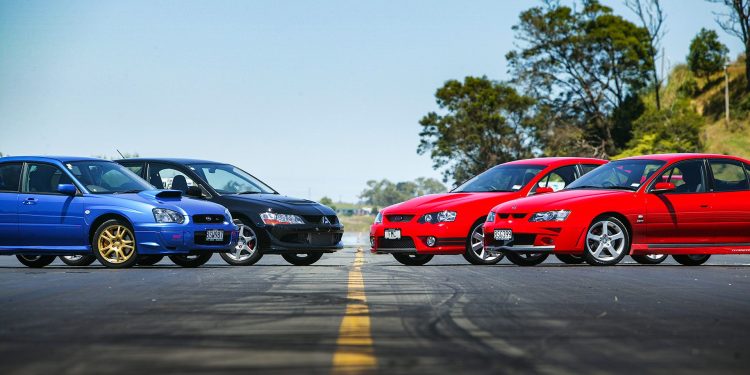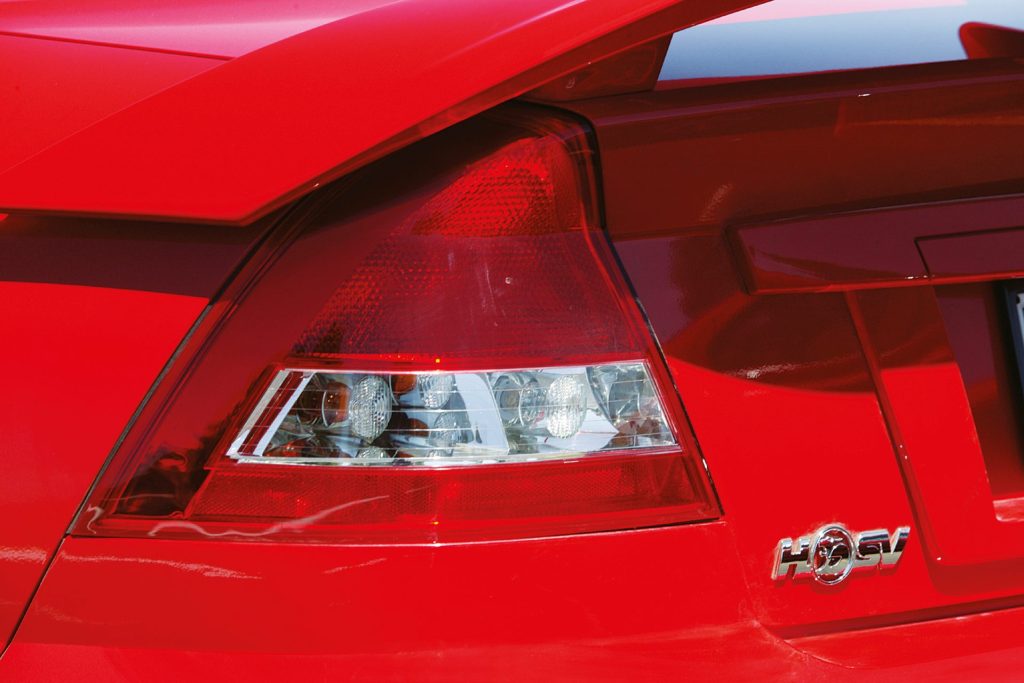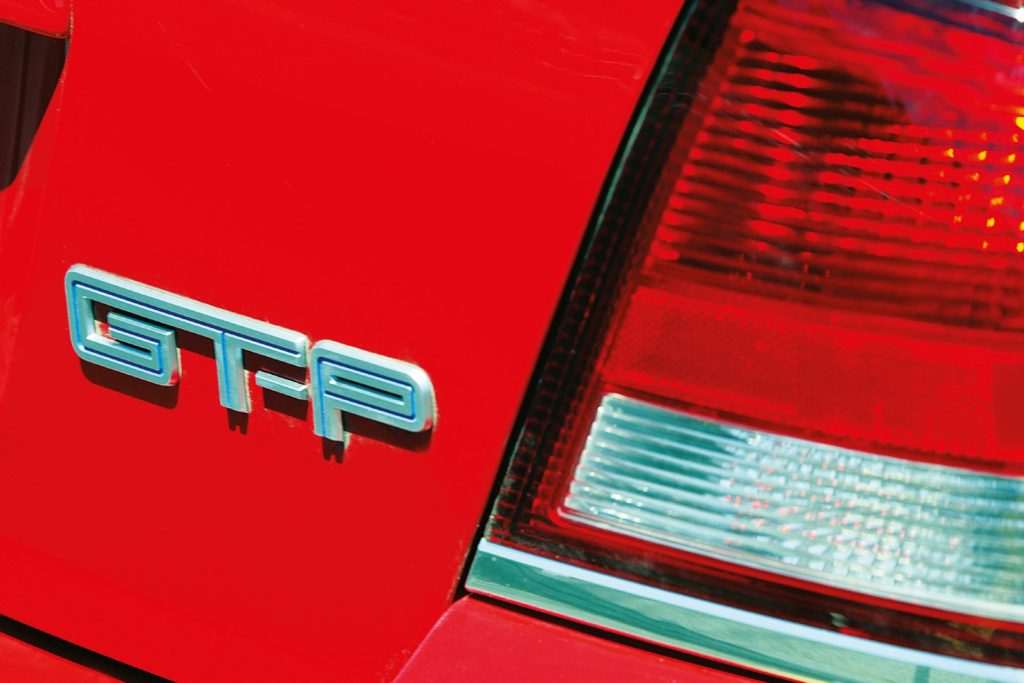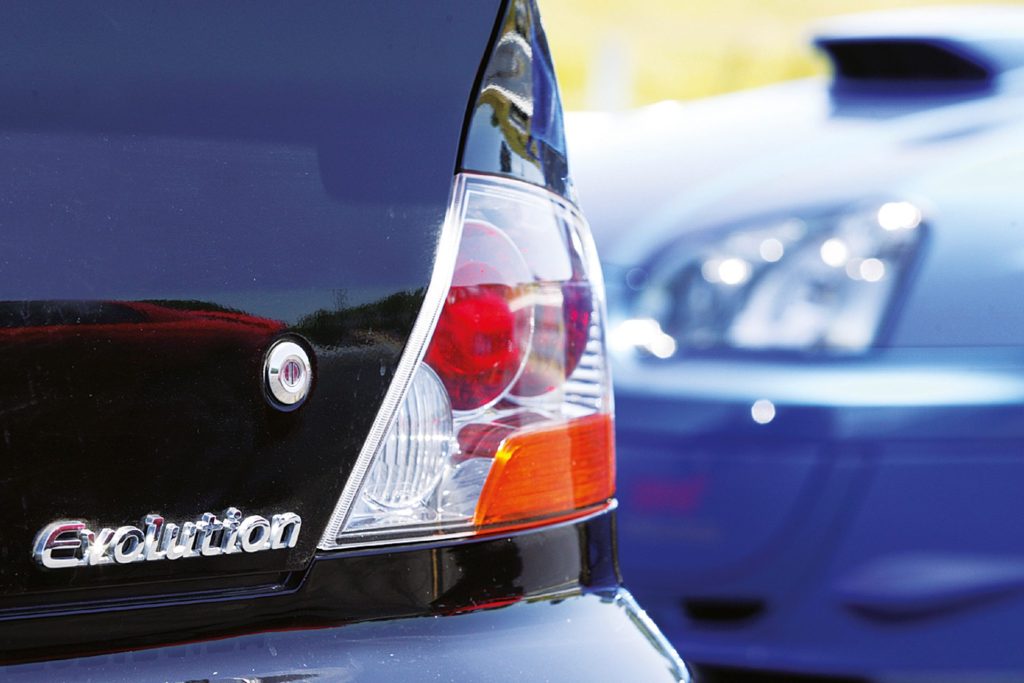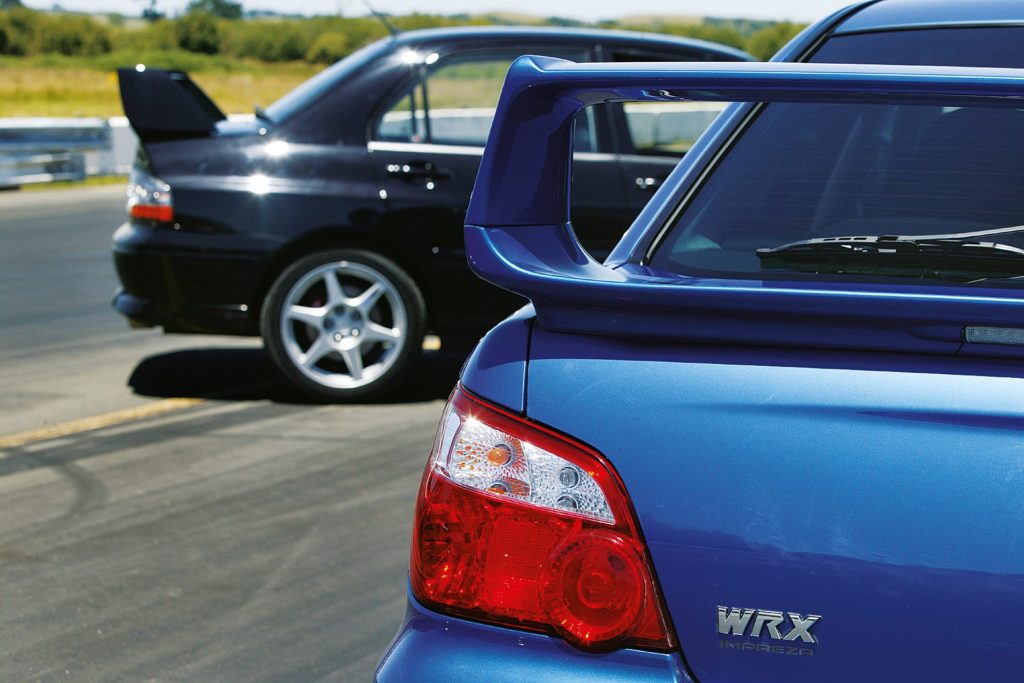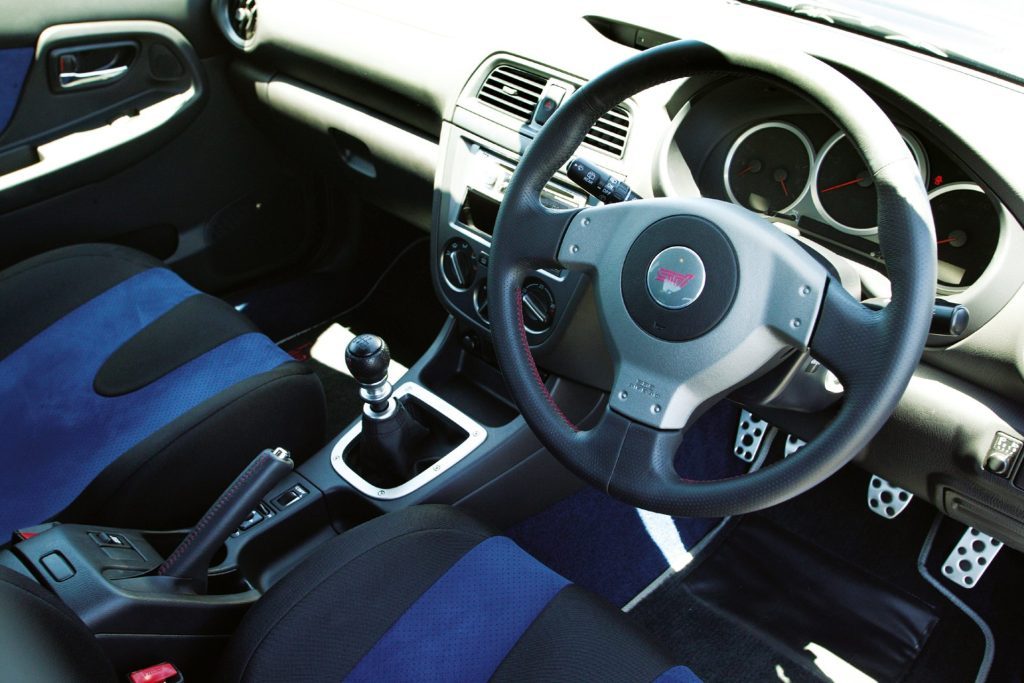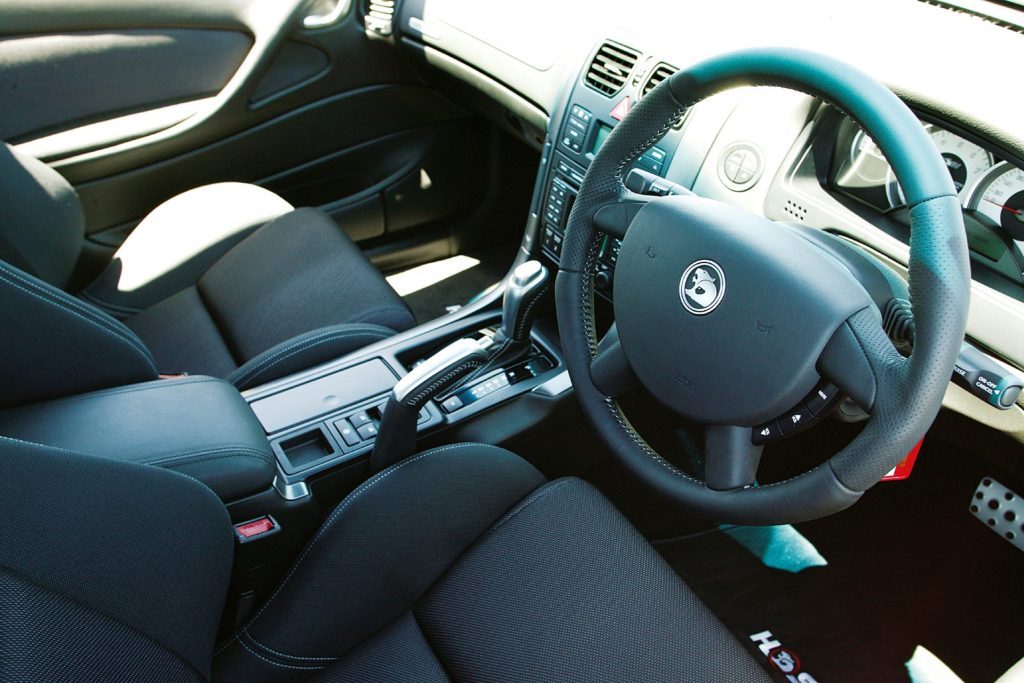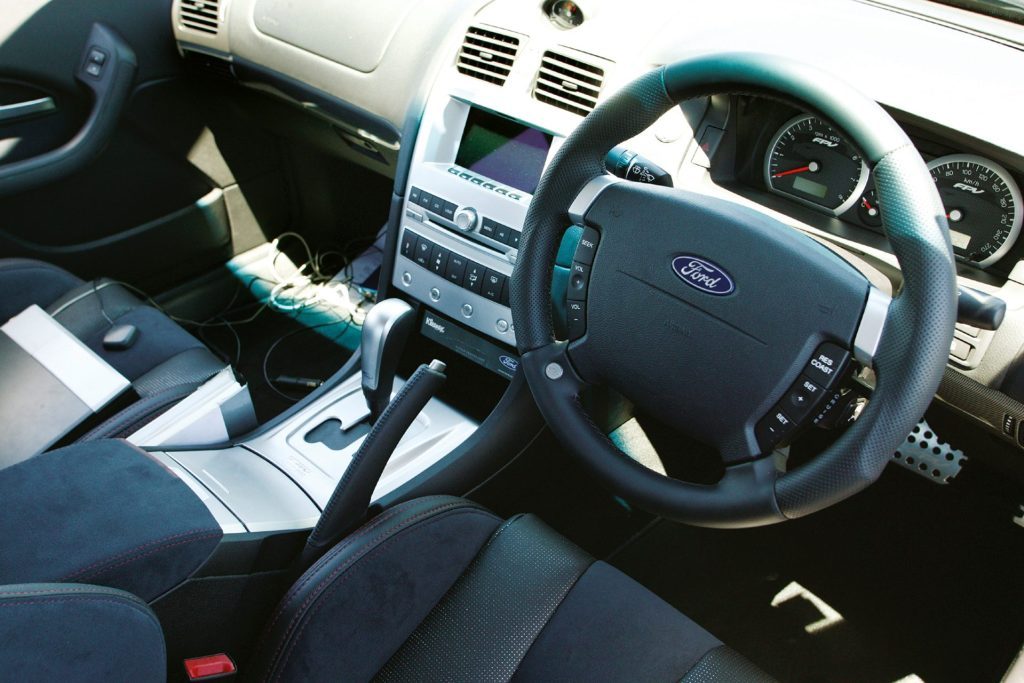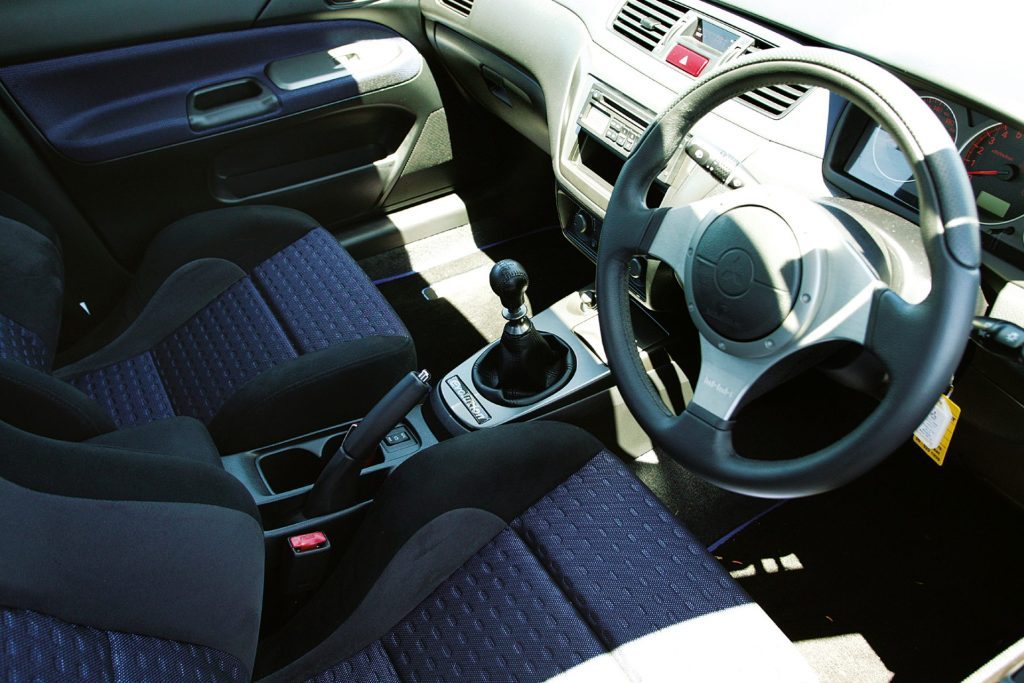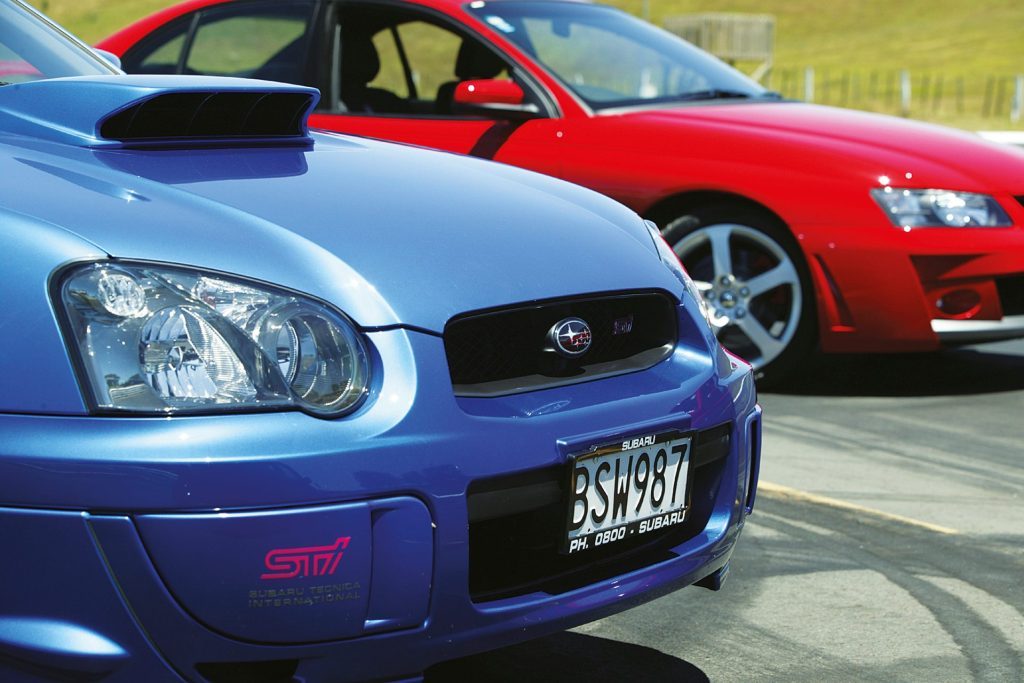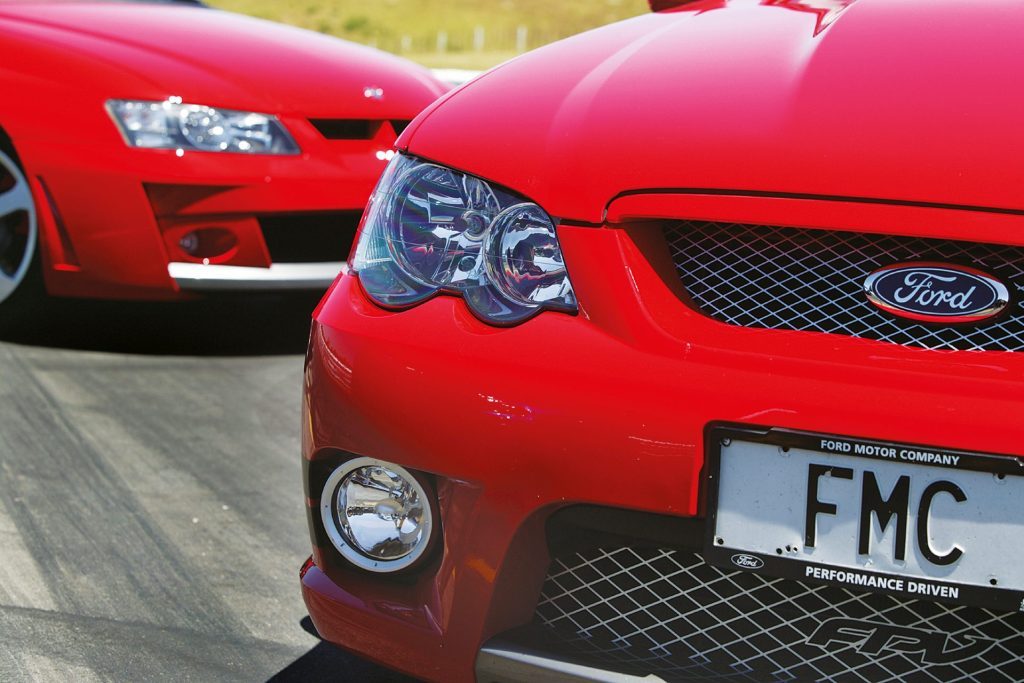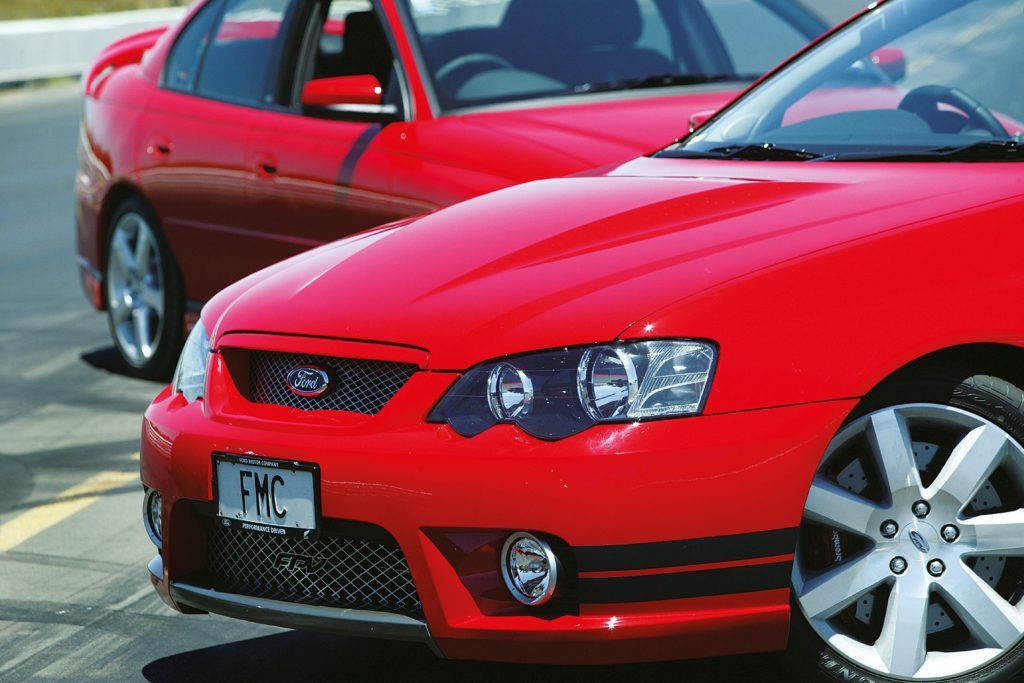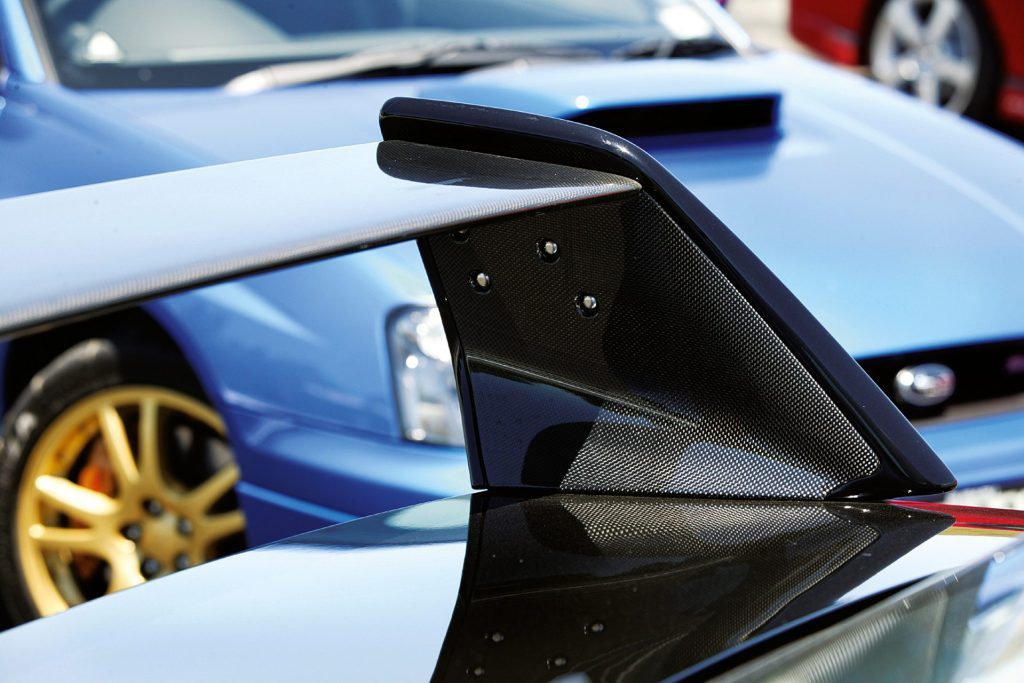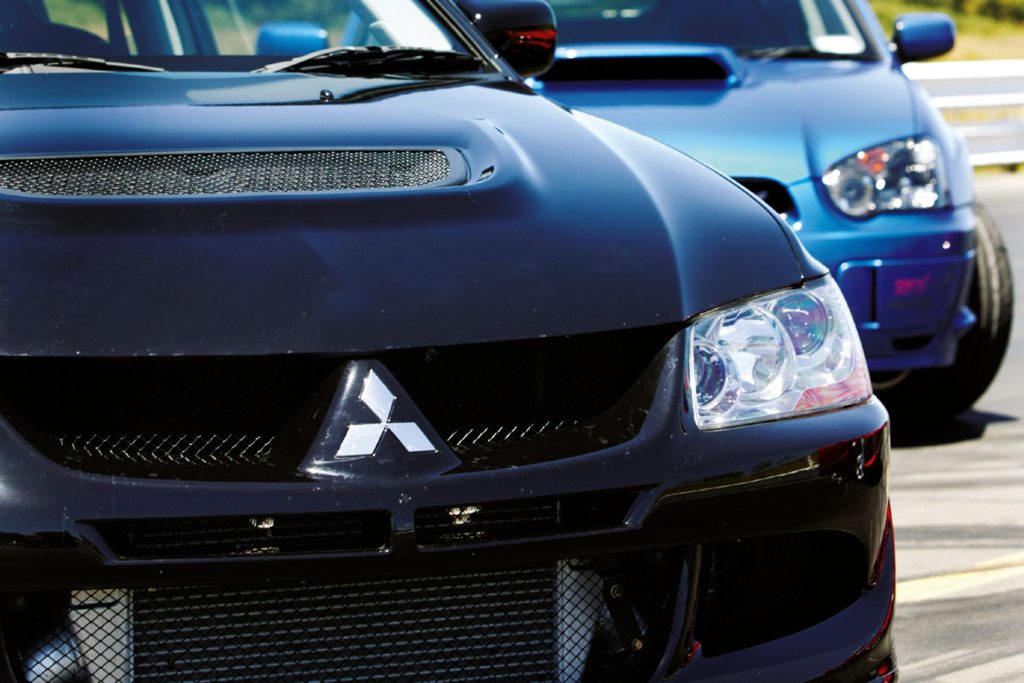2004 Mitsubishi Lancer Evo VIII vs Subaru Impreza WRX STi vs FPV GT vs HSV Clubsport comparison
Words: Peter Louisson | Photos: Tom Gasnier
Two tribes go to war in the battle for Asia-Pacific sports-sedan supremacy. The Mitsubishi Evo VIII and Subaru WRX Impreza STi are two lightning-quick Japanese 4WD sedans, but are they swift enough to eclipse a pair of thundering Aussie V8s, the FPV GT and HSV Clubsport?
Ever since some bright spark dreamed up the concept of the internal combustion engine and unshackled the pony from the sulky over a century ago, people have been trying to wring the neck of the horseless carriage. One hundred years on, nothing much has changed, except that all performance cars have a top speed somewhat in excess of 30mph. Thanks to V8 Supercars, WRC and the like, the performance-car class is booming.
Modern examples offer more than just pure performance; they’re increasingly practical, comfy enough to be used as everyday drive cars, and have safety features that should see you right when it all turns pear-shaped.
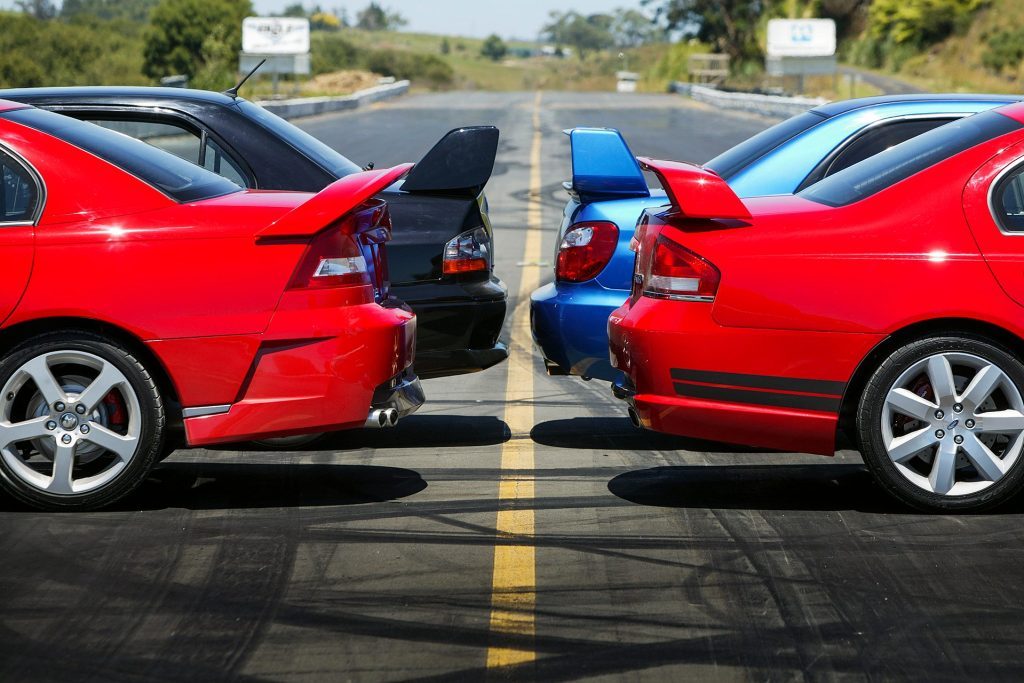
Folks often congratulate themselves with a new car if the business is doing well, or the property market is bubbling along. A new performance car offers the biggest thrills, and the choice nowadays is almost overwhelming. You don’t need to spend supercar prices to obtain real go-forward mumbo.
Four examples spring to mind that offer scintillating performance at a remarkably similar price point. That they achieve this in quite markedly different ways is somewhat irrelevant, though plenty will feel the need to argue the toss here. While two of these, the Subaru WRX STi and the Mitsubishi Evolution VIII, are both motivated with turbocharged 2.0-litre fours driving all four wheels, the almost-as-quick opposition from Australia, the FPV-GT and HSV Clubsport, rely on normally aspirated V8 power, driving the rear wheels. The latter are much larger cars, with significantly more horsepower and torque, but carry greater bulk.
A comparison of these two tribes, the rally replicas and the rubber-shredding titans, will be anathema to many. Dyed-in-the-wool V8 buyers won’t consider a small-bore turbocharged vehicle – wrong image, wrong sound, too cramped. And amongst the V8 worshippers, the Ford faithful won’t consider a Holden V8, and vice versa. And the types that get off on rally replicas won’t give a fig for the V8s – too heavy, too slow, not enough technology. But for those with no such affiliations, and wanting the ultimate affordable performance rocket, a comparison of these carriages from different sides of the tracks is not so inappropriate. The fact that they cost similar money adds to the intrigue. So buckle up and hold on tight. There’s a total of 987kW and 1816Nm on test here.
Price/Equipment:
The big Aussies compete fiercely for market share and therefore cost the same as each other: $75,500. Both are the entry-level models of the FPV and HSV performance-car ranges. In each case, the manual and auto transmission variants cost the same amount. We ended up driving two auto V8s because of availability.
In theory, the rally replicas are almost $10K apart, with the STi on $64,990 and the Evo VIII on $74,500. But Mitsubishi salespeople are a bit negotiable, especially if you mention the dreaded ‘STi’ letters.
The Aussie performance cars are supposedly better specified than the Japanese competition, but manual air conditioning in the FPV GT doesn’t quite cut the mustard, and there’s no left footrest. Equally, the manual sequential gate in the Clubsport is conspicuous by its absence. The rally specials both miss out on cruise and traction control, which the V8s get (and need in the wet).
In terms of new spec, the Y series II Clubsport now gets 18-inch rims, and upgraded four-way power-adjustable sports seats with active head-restraints.
FPV standard fare includes a pushbutton starter, power height-adjust to the sports seats and, like all the others, a single-slot CD player.
The Japanese rally clones are even more like identical twins on the gear front than the Aussie cars. Both feature leather-bound Momo wheels, Recaro sports seats, Brembo brakes, tinted windows, dual front airbags, rear wash/wipe units and remote central locking with immobiliser. The STi adds an alarm and datadot technology, but has only semiautomatic air conditioning rather than the fully auto air of the Evo.
Design/Engineering:
Ideally, you would want a performance car to be lightweight, powerful and shift by manual transmission. All here tick the power box – no question – but none is exactly lightweight because they’re all based on four-door family sedans. The lighter, more single-purpose Japanese cars feature only manual transmissions – and six-speeders at that. There is a trend for performance cars to feature four-wheel drive, like the Bentley Continental GT and Lamborghini Gallardo. Now even the Aussie car makers are getting in on the act. HSV is ready to roll with its AWD Avalanche and Ford is also working in this territory.
The Aussie approach to performance cars reflects the Antipodean racing bias, along with the need for practicality; hence, the option of a four-speed automatic transmission. The vast majority are sold with this.
Expect state-of-the-art drivetrain technology and grip from the Japanese cars, and easily negated grip with the rear-drive V8s, tamed only by defeatable traction control.
There are some group similarities: all four have body kits with prominent spoilers, hot alloy wheels encased in sticky rubber, and hip-hugging seats that bigger folk might find torturous. Sports pedals, wheels and shift levers are de rigueur.
The ‘VIII’ is the latest in the Evolution line-up that first launched in 1992. We reckon it looks better than the out-there bulldog-like STi. It’s more understated: no postbox bonnet scoop, and a better integrated rear wing. But for interior style the Evo is third runner-up here. Rip out the sports fittings and you could be sitting in a standard Lancer.
The most striking change to Evo in its eighth iteration is the addition of a sixth ratio to the manual shifter, which brings it up to speed with the STi. But there are also minor engine upgrades, adding 10Nm to the mix. This brings torque to within two newton metres of the STi (392Nm), but at 3500rpm (versus 4400rpm for the Subby). Evo VIII also features a new aero package, stiffer suspension mounting points, and up-rated Active Yaw Control. The Super AYC works in conjunction with the active centre diff to improve cornering, steering and traction. It transfers torque to the outer rear wheel when exiting a corner, reducing understeer.
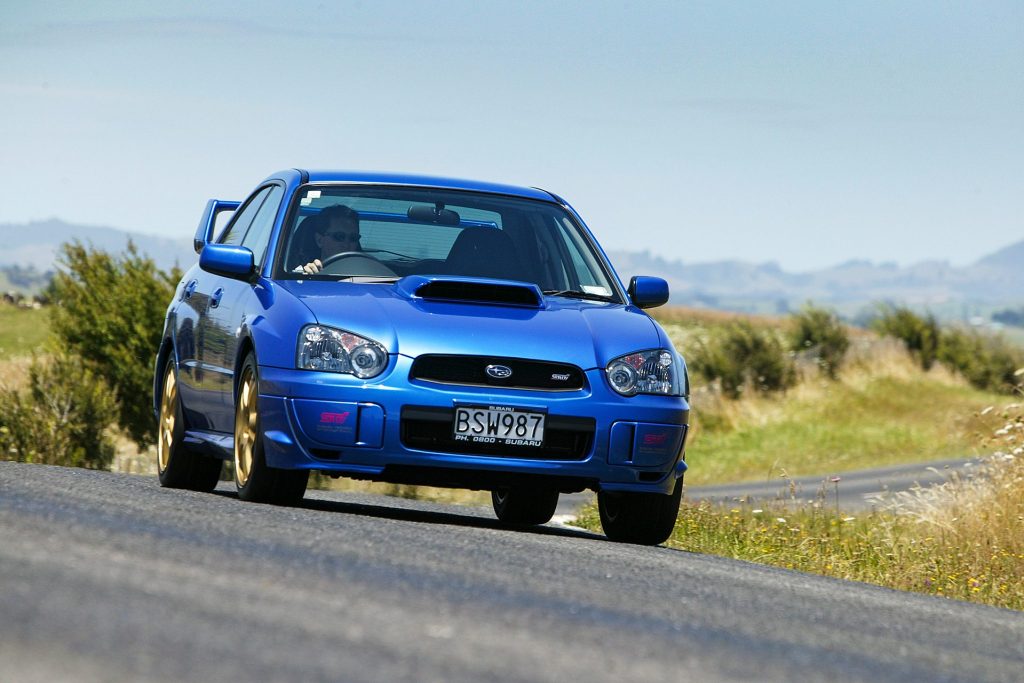
STi technology was well covered in our review last year so we will focus mainly on differences from the Evo. Also up to version VIII, this STi sees the return of an adjustable centre diff. The Evo’s has selectable tarmac, gravel or snow settings for its centre diff.
Variable-valve timing makes its debut in the STi, a feature strangely absent from the other three cars.
Ford Performance Vehicles (FPV) is a new start-up, and is the most serious effort yet by Ford to foot it with HSV. The GT is instantly recognisable as a BA Falcon derivative, and while it could be mistaken for an XR8, it still gets our vote as the most horn-looking car of the group. It has the most tasteful body-kit and the best bonnet shape. Hop inside the GT (watch your head) and you could almost be in the base Falcon XT. Which is no bad thing: the centre console is clean and tidy.
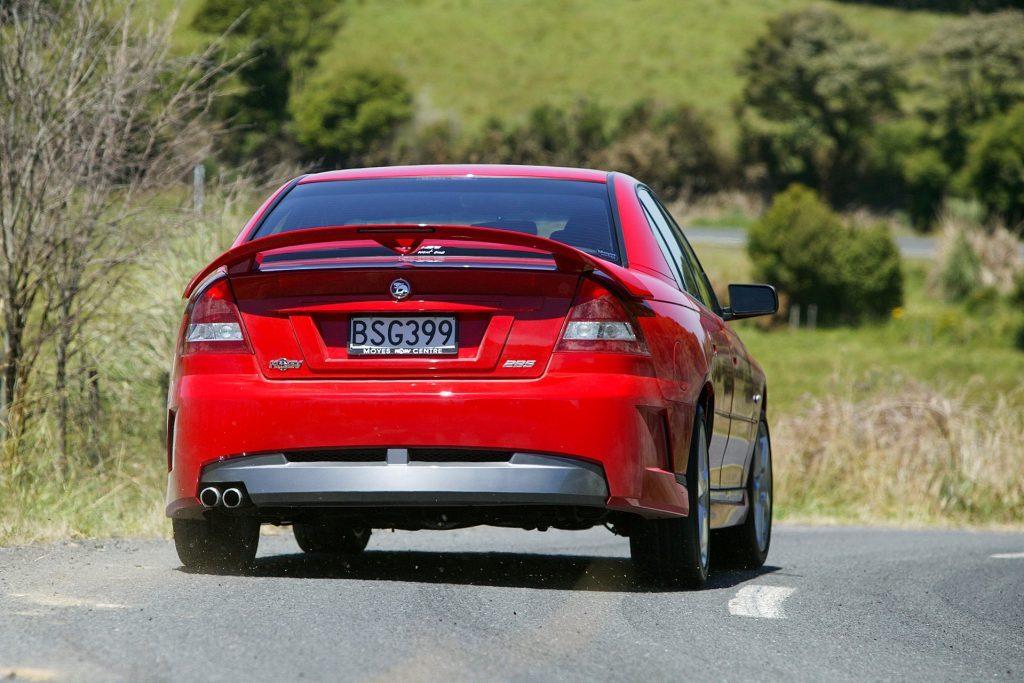
FPV needed something to counter the sheer size of the LS1, and chose a 5.4 litre V8 with a cast-iron block onto which Ford Australia grafted alloy multivalve twin-cam heads, and dubbed it ‘Boss 290’. It’s a huge lump of a motor, and the ‘power bulge’ in the bonnet is there not to make room for the swollen heads but to allow sufficient ground clearance! Add this mass to the stiffened BA chassis and weighty independent rear suspension set-up, and the GT tips the scales at the best part of 1850kg. The Clubsport is almost 200kg better off, and the smaller Japanese cars weigh 200kg less again.
Ford claims the John Bowe-tuned suspension offers an ideal mix of ride quality and handling. Rear suspension is like that on the Jaguar S-Type while the double wishbone front suspension contrasts with the Mac struts of the Clubsport.
In response to the launch of FPV models, HSV up-rated its new Y models to series II status. Which means more power and torque: the badge on the back of the Clubsport now reads ‘285’, reflecting the LS1’s more efficient and lower airbox, smoother intake tract, and less restrictive exhaust – changes liberating 25kW and 35Nm. The Clubsport also gets the heavy-duty auto from the GTS and the addition of a strut tower brace up front; sports seats win more thigh support and the sports steering wheel is new.
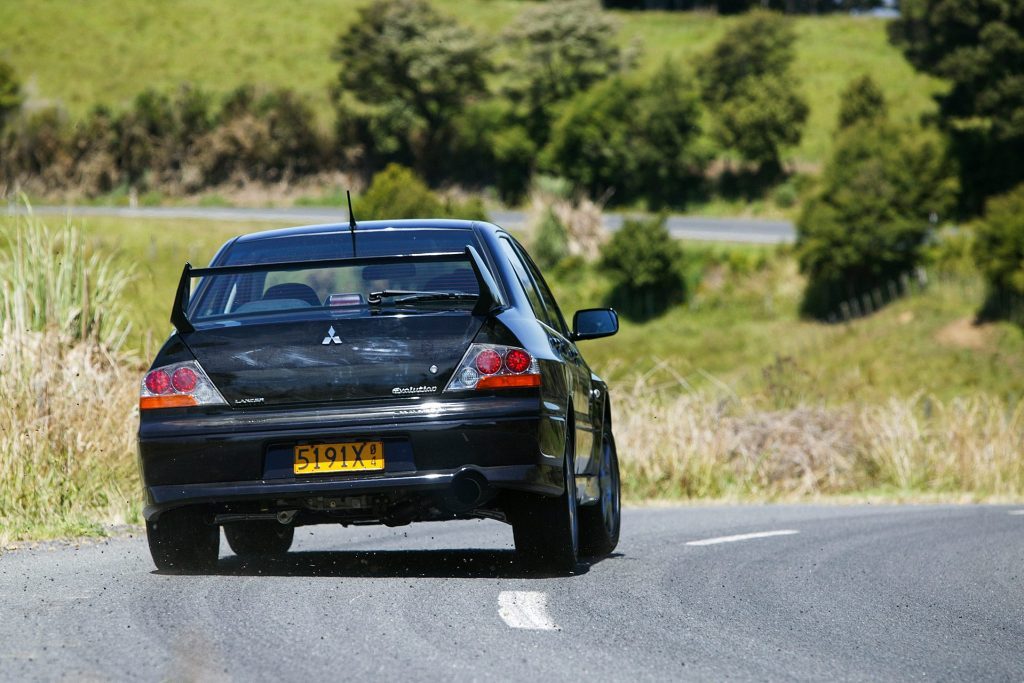
Performance:
Car nuts are often besotted with 0-100km/h times, despite there being a host of factors involved in achieving a ‘best’ sprint, particularly the launch. We found it hard to differentiate which of the rally rockets was quickest here, so we’ll call it a tie. Both blasted out of the starting blocks on boost, and reached 100 in 5.3 to 5.4 seconds, where the manual Ford FPV registered a best of 5.73s. HSV claims an optimistic 5.3s for the manual Clubsport, but we have no figures on an appropriate 285kW HSV. In our hands, the auto version struggled to break 6.50s, but it handily outran the auto FPV GT, which only just cracked 7.0s. The Ford’s not much good for burn-outs either, whereas the auto HSV seemed addicted to smoking. The extra weight of the FPV is telling.
The 80-120km/h (TED) time is a much better indicator of true performance as it is subject to less variability. The Evo VIII consistently dispatched the overtaking surge in 3.12 to 3.15s whereas the STi’s best was 3.28s, with a mean of 3.30s. Next in line was the HSV with a time of 3.87s, and the FPV failed to break 4.0s.
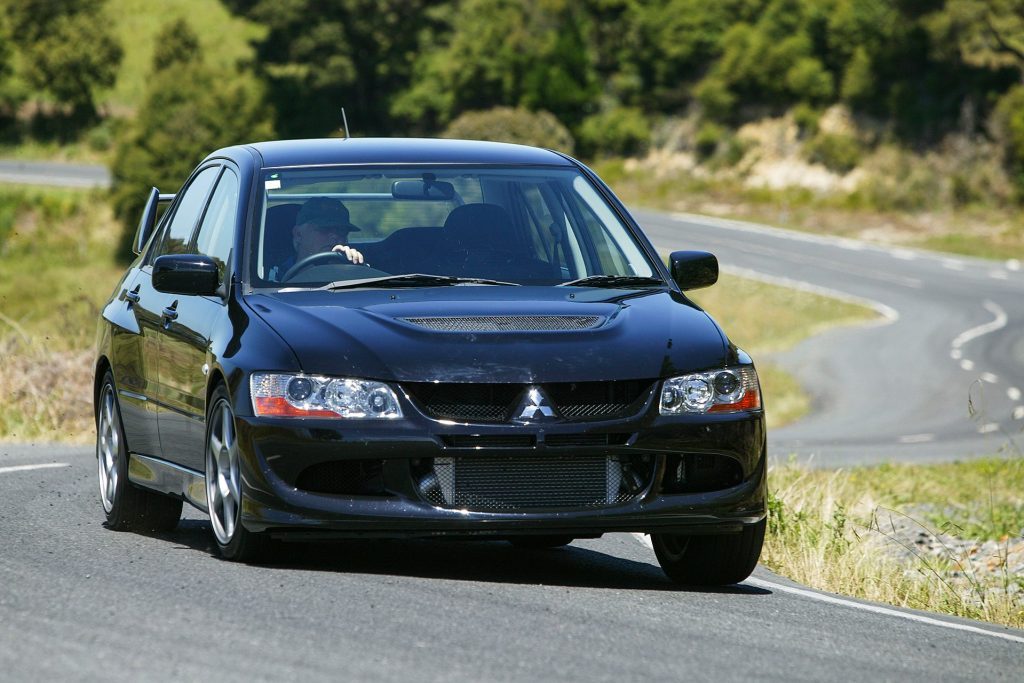
The two rally rockets have a flood of accessible torque – downshifting to overtake is optional – so extracting their considerable performance is child’s play. You don’t even have to rev the guts out of them as 3500 to 5500rpm is plenty. You can also ease both along on gentle throttle openings with just a hint of boost, conserving fuel when you’re not racing around.
The Subaru felt stronger than the Evo VIII below 3000rpm, pulling with greater authority in sixth gear from 80 through to 120km/h. Put this down to the Subaru’s lower overall gearing and variable-valve timing. The Subby engine is also slightly smoother and better sounding, and its gearbox action is a touch quicker, whereas the Evo ’box is slightly more positive to engage.
These cars all astound with their braking ability, particularly the Evo and STi, which are simply brilliant retards. The STi produced the best panic stop from 100km/h we have ever recorded at 33.13 metres…until the Evo came along and managed a 33.09m stoppie. The Brembos do the bizzo, which is why the Falcon FPV GT-P also gets them and they’re optional on the GT. We clicked off a 34.66m 100-0 figure, with superbly progressive brake-pedal modulation. We thoroughly recommend spending the extra on the GT-P for this reason alone; they’re simply world-class brakes. We have also recorded excellent stopping distances from HSVs of late – consistently in the 34m sector, with a best of 34.61m.
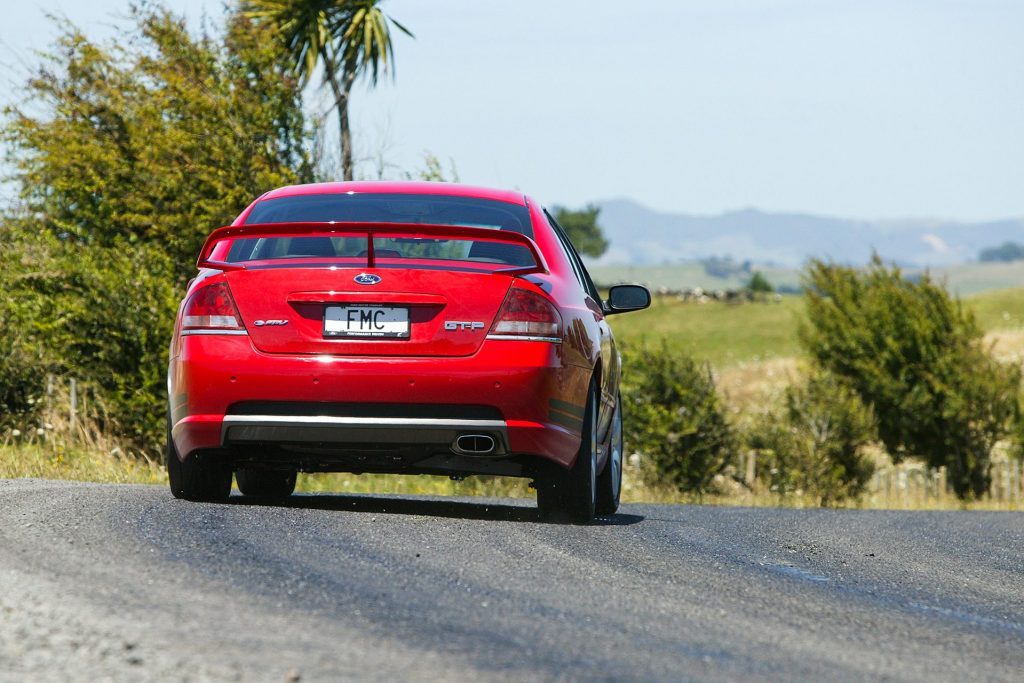
After slingshotting around in the turbos, the V8s come as somewhat of a surprise. The first was pleasant. Changes to the LS1 engine have at last made the Clubsport a real grunter. The two-valve-per-cylinder mill comes alive from 2000rpm onwards so the lack of a sequential shift gate is not too big a deal. The real rush of power starts at about 3000rpm.
Ford got it right with its FPV gearbox, but the 5.4 litre engine is not quite the Boss that Bruce Springsteen is. Sure, the multivalve twin-cammer goes like stink and bellows the best above 4000rpm, but let it sink below 3000rpm and its authority wilts, at least when you’re out scaring nature. Full tilt, it runs into the 5800rpm limiter as if you’ve just blocked off the air intake with a small furry animal. One area where the V8s claw back some ground against the rally boys is in dealing with unwanted road rumble. Both the big cars cruise at 100km/h over coarse-chip seal with ambient noise levels about 3.5dB below those of the Evo and STi. One final area the V8s rule is in top speed, as the oriental offerings strangle themselves at 180km/h thanks to the interference of Japan’s transport bureaucrats.
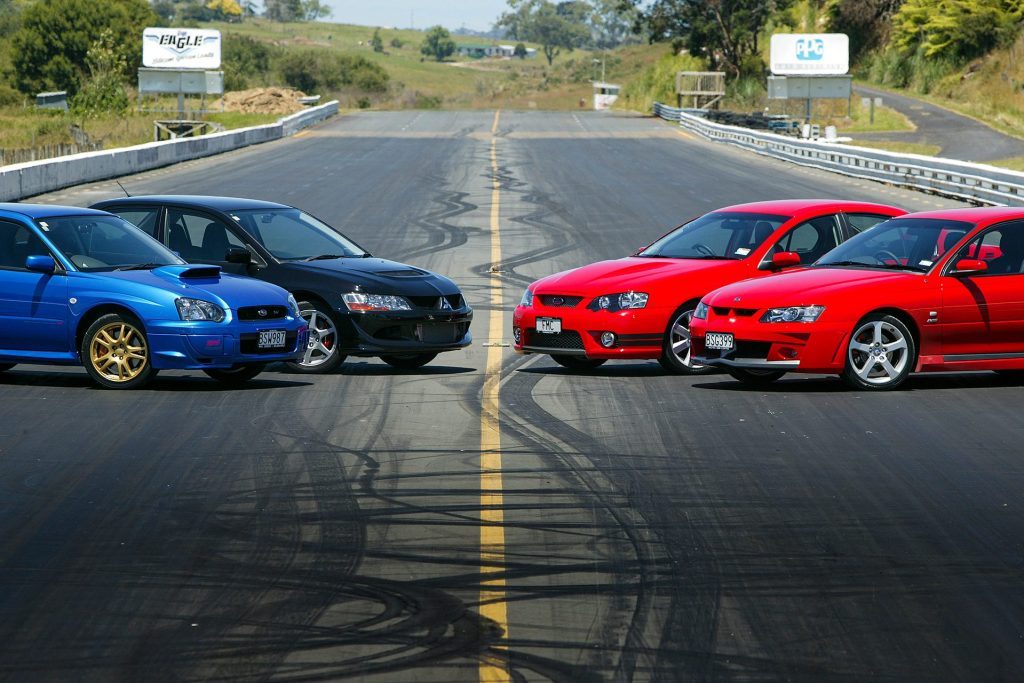
Driving Dynamics:
You only need to take the all-paws out in the countryside for a short spin to realize how large a handling and safety advantage is offered by smart four-wheel-drive systems. OK, so the rally raiders don’t burn rubber: they burn clutches. But during our high-summer photo shoot, the seal bleed caused the V8s some consternation. In second gear the traction control lights were blinking like a fool when we were trying to fire out of corners. Meantime, the dynamic duo would power through about 15km/h quicker, and with all the confidence of Bill Gates endorsing Windows XP.
The four-paw pair, with their computer-guided limited slip diffs – and active yaw control in the case of the Evo – ensure traction is optimised no matter what the surface or situation. As a driver, they’re not only confidence inspiring, they make you feel like you have superhuman abilities at the wheel. Jump back into the V8s and you soon learn the awful truth of your mediocrity. Praise be that the V8s have traction control to rein in the torque when conditions are iffy. In the FPV the TC system is sometimes too much of a nanny, but you can always switch it off.
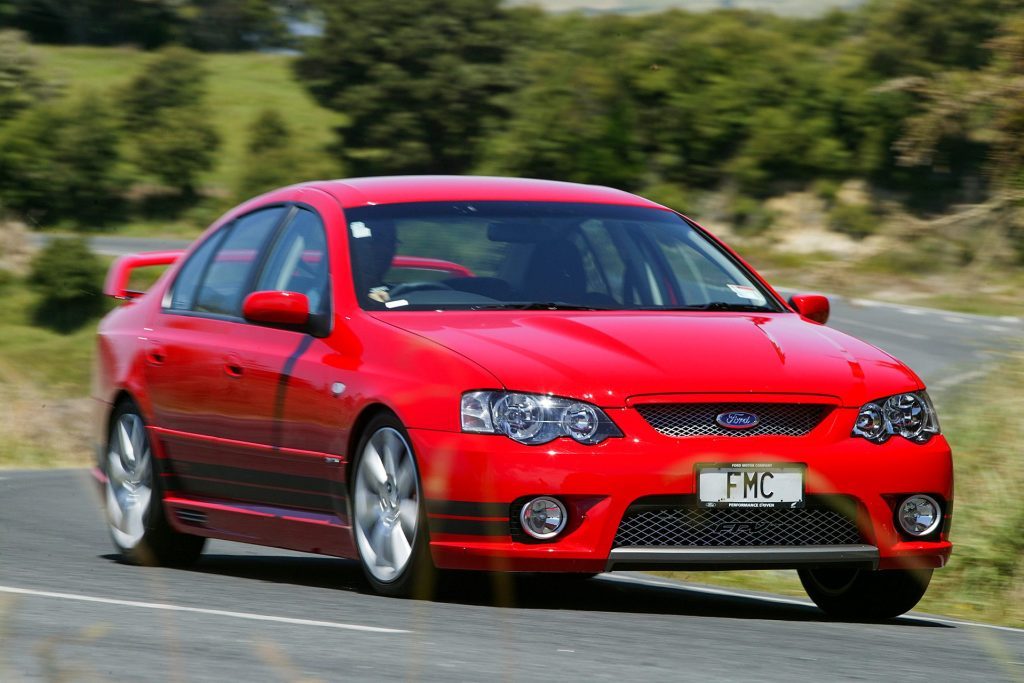
Of the two V8s – sorry HSV fans – the FPV has the chassis that works the best. The car steers with a little more enthusiasm and fidelity than the Clubbie, which can sometimes feel a touch vague around centre. There’s a bit more meaty weight in the Ford’s wheel too. The most notable aspect of the FPV drive is its seeming ability to shrink on road: it feels easier to place as the kilometres tick by and better grounded than the Clubbie. Neither of this pair turns in with quite the directness of the two smaller 4wd cars, but then few do.
If you think the GT is capable of feats of daring-do, driving the STi and Evo will make you feel like a conquering hero. The STi, with its ‘Supertrac’ front limited slip diff, has more bite than the standard WRX, and turns in with a degree of prescience that is matched only by the Evo. Carry in too much corner speed and the STi front will run outside the intended line, like a mildly sliced drive, but it snaps back to attention with a hint of brake pressure, or a whiff of liftoff. At the exit of the corner, a touch of power oversteer is the STi’s stock-in-trade attitude.
The FPV and Clubsport have impressive control of body movements in corners and under brakes – until you drive the STi and Evo, which are the real gymnastic champions, with the Evo finally giving the STi a lesson in absolute neutrality. It has the most intuitive steering of the bunch, virtually cornering by following the contours of the road. Very little wheel movement is needed, though the payback is that it wanders slightly at speed. It has much the worst turning circle at 11.8m, but these are minor gripes because it is amongst the most accurate of cornering devices out there, thanks to the interactive smarts of the active yaw control and active centre diff. Here, the limiting factor is the humanoid at the helm, as this carves corners like only a pro snowboarder can. It’s a steering sensation, and ticks all the right boxes. On tortuous roads the Evo and STi, with their superior grip, accessible torque, lighter weight and extra couple of ratios, leave the FPV and Clubbie pilots floundering.
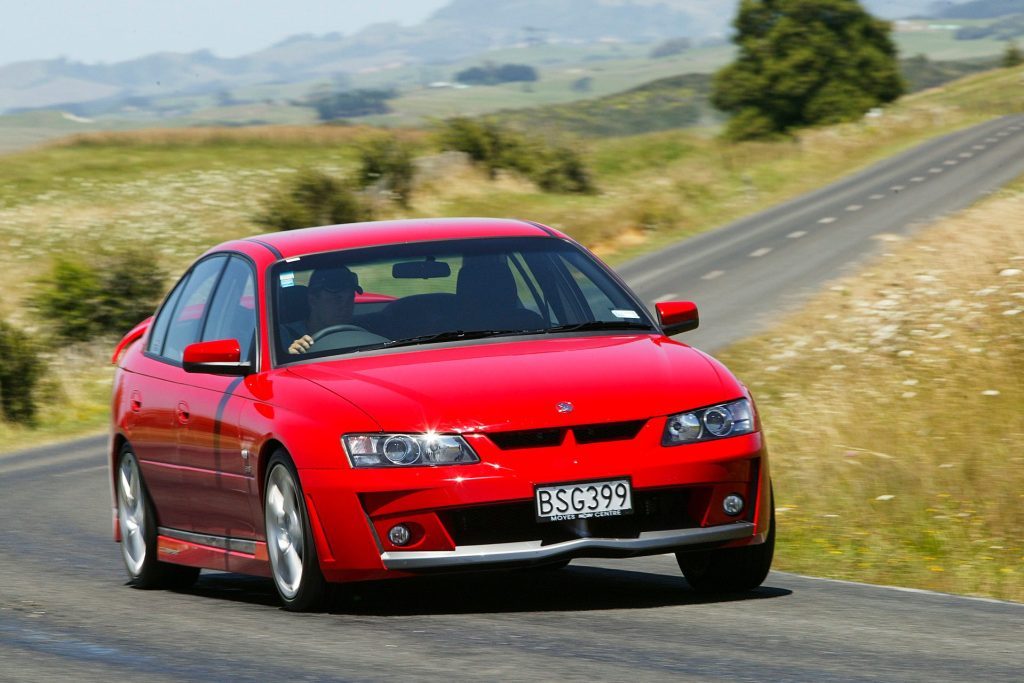
Comfort/Convenience:
The section where the V8s pull one back on the comfort-be-damned rally replicas. But the Evo and the STi are no longer the washboard-hard ride propositions they used to be. However, they’re both loud, particularly the STi: its tyres roar to distraction over the worst coarse-chip surfaces and hum like a shonky diff on urban streets.
Overall, the GT is the pick of the bunch for ride comfort, with the Clubsport a close second. At highway speeds the FPV, with its well-sorted rear end, laps up road-surface irregularities. What surprised was the way the Evo and STi suspensions limber up as speed rises. They may be rough diamonds over indifferent surfaces at urban-crawl rates, but once up to speed the suspension is pliant enough to operate nicely over general lumps and dips.
For practicality, the bigger cars rule. The Clubsport is the biggest carry-all, but doesn’t feature the split-folding facility of the GT. Boot capacity in the large cars is roughly similar. For the other two, the Evo gets the nod for interior and boot space. But its lap-belt in the centre rear position gets a tut-tut. Neither offers a split-folding seat back. The Kenwood head-unit in the Evo cannot scale the heights of the Alpine in the STi. However, the Mitsi offers the best driving position, providing you haven’t overindulged during the Christmas break, and then the STi may suit better. The Mitsi also has the sweetest steering wheel, an alloy-rimmed Momo. Evo pedals are superbly sited, and the generous left footrest shades the others. In the Aussie cars you tend to sit up too high, though sports seats in both are killer. Despite the wings, visibility is surprisingly good in all cars except the Clubsport, as you can’t peer underneath its appendage like you can with the others.
Fit ’n’ finish goes the way of the STi, which also features excellent paint work. Attention to detail is impressive: the solid key is milled from stainless. Its English handbook is more use than the Japanese offering in the Evo.
The Ford has a couple of snappy features, like the dedicated space for the box of tissues at the base of the centre console. If you’re crying about the rally replicas hauling off into the distance, at least you can dab your eyes dry in this car. Nice instruments too. The HSV has a welcoming interior, with soft, dark textures and alluring instruments, but the window lifts should be up round the door area, not between the seats, and the segregation of aspects of the trip computer to three different areas is confusing.
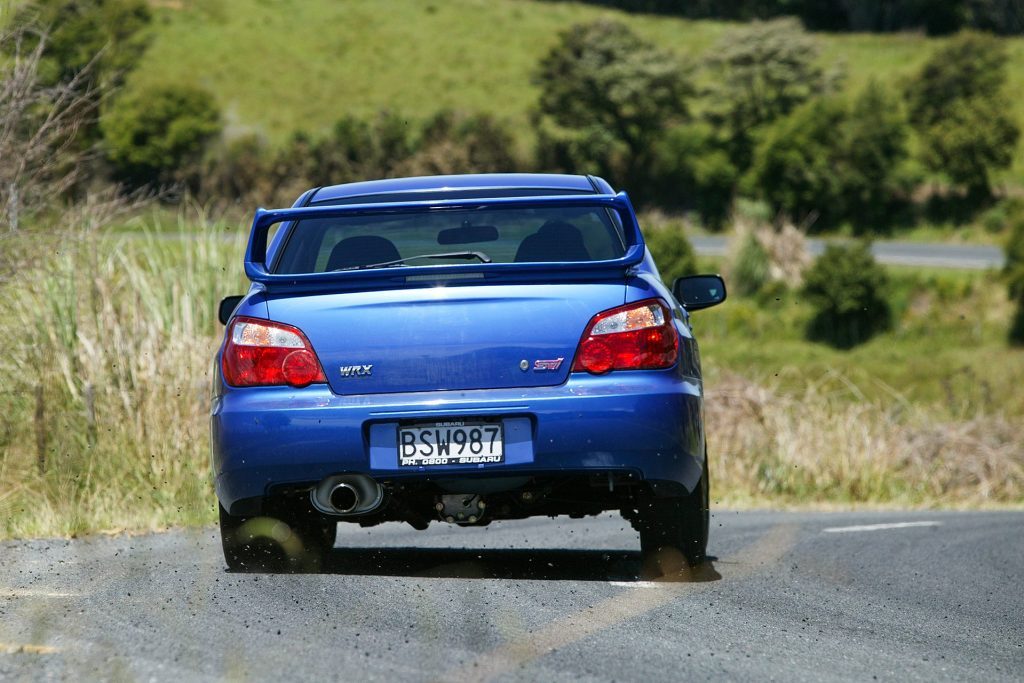
Verdict:
Our choice: The Evo is the quickest, lightest and most nimble here, and has the best steering and brake performance to boot. Not the flashest inside, but it’s the performance-car thriller of this bunch.
WRX STi: If you’ve any qualms about the Evo, this is the obvious alternative. More low-down grunt makes it the easier urban drive. And it has a smarter, albeit tighter, interior.
FPV GT: The better of the two Aussie cars by way of its superior chassis performance. It’s also the most comfortable of this gang of four. Manual sequential transmission makes up for a narrower power band.
HSV Clubsport: The Clubsport is lighter than the FPV GT and outguns it. The upgraded LS1 now has the bottom-end grunt it sorely needed. On the wish list is manual sequential gearbox operation.
| Model | 2004 Mitsubishi Evo VIII |
| Price | $74,500 |
| Engine | 1997cc, IL4, T |
| Power | 206kW/392Nm |
| Drivetrain | 6-speed manual, AWD |
| Fuel Use | 10.3L/100km |
| 0-100km/h | 5.38sec |
| Weight | 1447kg |
| Model | 2004 Subaru Impreza WRX STi |
| Price | $64,990 |
| Engine | 1994cc, B4, T |
| Power | 206kW/394Nm |
| Drivetrain | 6-speed manual, AWD |
| 0-100km/h | 5.28sec |
| Weight | 1461kg |
| Model | 2004 FPV GT |
| Price | $75,500 |
| Engine | 5385cc, V8, EFI |
| Power | 290kW/520Nm |
| Drivetrain | 4-speed auto, RWD |
| Fuel Use | 15.0L/100km |
| 0-100km/h | 6.93sec |
| Weight | 1826kg |
| Model | 2004 HSV Clubsport |
| Price | $75,500 |
| Engine | 5665cc, V8, EFI |
| Power | 285kW/510Nm |
| Drivetrain | 4-speed auto, RWD |
| 0-100km/h | 6.50sec |
| Weight | 1647kg |


